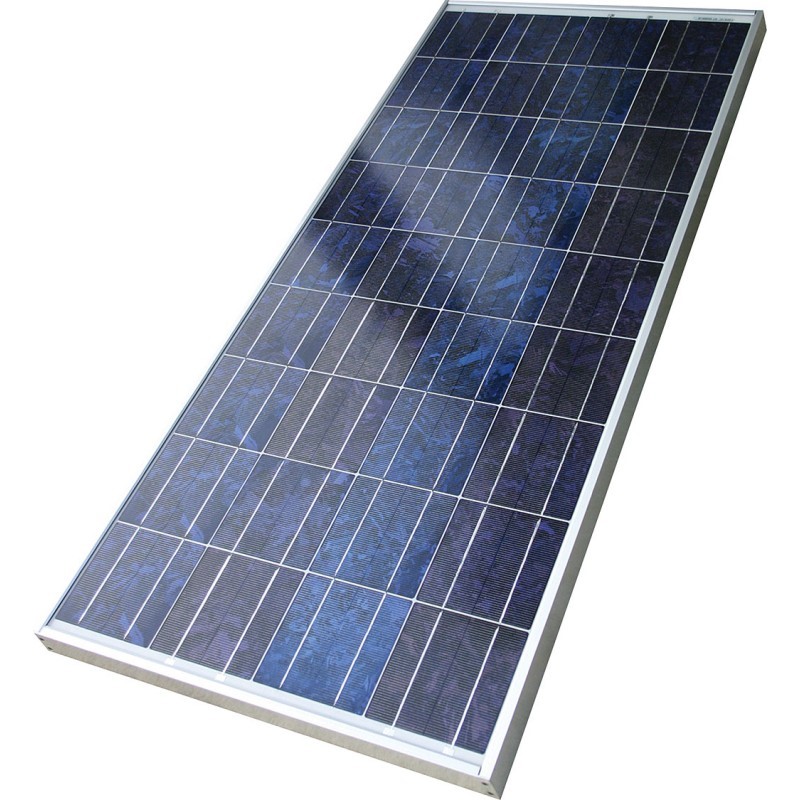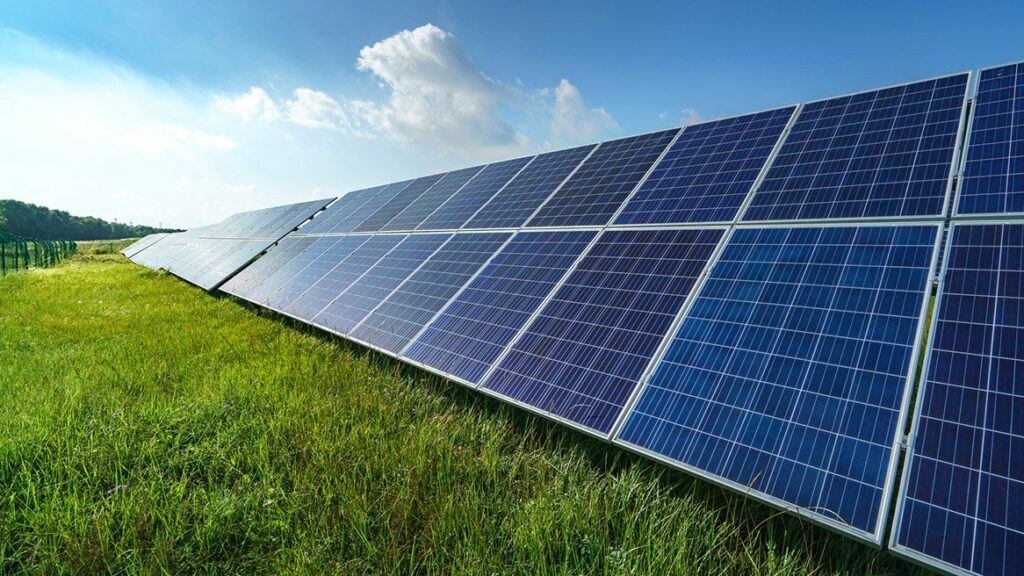Efficiency of Solar Panels – Solar energy is both cost-effective and dependable. For years, the well-known panels, which are typically installed on roofs, have provided outstanding returns – but there is still much to be gained. PV system conversion efficiency might double in the long run. Furthermore, the cost of PV systems might be lowered by at least three times. See this post to understand more about various types of solar panels.

Factors Affecting Energy Conversion Efficiency
In 1961, William Shockley and Hans Queisser published a seminal work on the factors that determine energy conversion efficiency.
Thermodynamic Efficiency Limit and Infinite-Stack Limit
When a heat source is at Ts and a cooler heat sink is at Tc, the maximum theoretically achievable ratio of work (or electric power) obtained to heat provided is 1-Tc/Ts, as determined using a Carnot heat engine. If we choose 6000 K for the temperature of the sun and 300 K for the temperature of the earth’s ambient circumstances, we get 95 percent. Alexis de Vos and Herman Pauwels demonstrated in 1981 that this can be done with an infinite number of cells with band gaps ranging from infinity (the first cells encountered by incoming photons) to zero, a voltage in each cell very close to the open-circuit voltage, equal to 95 percent of the band gap of that cell, and 6000 K blackbody radiation coming from all directions.
In this case, the voltages must be dropped to less than 95% of the bandgap (the percentage is not consistent over all the cells). The maximum theoretical efficiency determined is 86.8% for a stack of an infinite number of cells, using the incoming concentrated sunlight radiation. When the incoming radiation comes only from an area of the sky the size of the sun, the efficiency limit drops to 68.7%. However, the 95 percent efficiency achieved means that the electric power is 95 percent of the net amount of light absorbed – because the stack has a non-zero temperature, it emits radiation, which must be subtracted from the incoming radiation when evaluating the rate of heat transfer and the efficiency. They also studied the more pressing problem of maximizing the power output for a stack lighted by 6000 K blackbody radiation from all sides.
Ultimate Efficiency
Normal photovoltaic systems, on the other hand, contain only one p–n junction and so have a lower efficiency limit, which Shockley and Queisser refer to as the “ultimate efficiency.” Because photons with energies below the bandgap of the absorber material cannot produce an electron-hole pair, their energy is not transferred to useful output and is only used to generate heat if absorbed. Only a fraction of the energy over the bandgap can be transferred to meaningful output for photons with an energy above the bandgap. When a photon with higher energy is absorbed, the excess energy above the bandgap is transferred to the carrier combination’s kinetic energy. As the kinetic energy of the carriers reduces to equilibrium velocity, the surplus kinetic energy is transformed to heat via phonon interactions. The greatest theoretical efficiency of traditional single-junction cells with an appropriate band gap for the solar spectrum is 33.16 percent, or the Shockley–Queisser limit.
Solar cells with multiple band gap absorber materials boost efficiency by breaking down the solar spectrum into smaller bins, each with a greater thermodynamic efficiency limit.
Quantum Efficiency
As stated above, when a photon is absorbed by a solar cell, it can form an electron-hole pair. One of the transmitters may reach the p–n junction and contribute to the current generated by the solar cell; this is referred to as a “collected” carrier or the carriers recombine, leaving the cell current unchanged.
When a cell is operated under short circuit conditions, quantum efficiency refers to the percentage of photons converted to electric current (collected carriers). Optical losses such as transmission and reflection are included in the “external” quantum efficiency of a silicon solar cell.
Some efforts, in particular, can be implemented to mitigate these losses. A technique called texturization, a light trapping technology that alters the average light path can drastically reduce reflection losses, which can account for up to 10% of the total incident energy.
A spectrum measurement is the most useful way to express quantum efficiency (that is, as a function of photon wavelength or energy). Because some wavelengths are more efficiently absorbed than others, spectral studies of quantum efficiency can provide useful information on the quality of the semiconductor bulk and surfaces. Because quantum efficiency does not transmit information on the fraction of power transformed by the solar cell, it is not the same as overall energy conversion efficiency.
Maximum Power Point
Normally, a solar cell can work at a variety of voltages (V) and currents (I). By gradually raising the resistive load on an irradiated cell from zero (a short circuit) to a very high value (an open circuit), the maximum power point, or the load for which the cell can supply maximum electrical power at that amount of irradiation, can be determined. (At both the short and open circuit extremes, the output power is 0.)
At 25 °C, a high-quality monocrystalline silicon solar cell may produce 0.60 V open-circuit voltage (VOC). Even with a 25 °C air temperature, the cell temperature in full sunlight will likely be near 45 °C, lowering the open-circuit voltage to 0.55 V per cell. With this form of cell, the voltage declines gradually until the short-circuit current is reached (ISC). Maximum power is normally produced with 75 percent to 80 percent of the open-circuit voltage (0.43 V in this case), and 90 percent of the short-circuit current (at 45 °C cell temperature). This output may account for up to 70% of the VOC x ISC product.
Short-circuit current (ISC) from a cell is nearly proportional to light, although open-circuit voltage (VOC) may only drop 10% with an 80% reduction in illumination. Lower-quality cells have a faster voltage drop as current increases and can only create 1/2 VOC at 1/2 ISC. As a result, the useful power output could reduce from 70% of the VOC x ISC product to 50%, or possibly as low as 25%. Vendors who rate their solar cell’s “power” solely in terms of VOC x ISC without providing load curves may be grossly underestimating their real performance.
The maximum power point of a photovoltaic alters depending on the amount of incident light. Dust collection on photovoltaic panels, for example, lowers the maximum power output. A maximum power point tracker follows instantaneous power by continuously measuring voltage and current (and thus power transfer) and using this information to dynamically adjust the load so that the maximum power is always transferred, regardless of lighting variations, for systems large enough to justify the extra expense.
What Types of Solar Panels Are Most Efficient?
Solar panels come in a variety of shapes and sizes. The following are the most prevalent types of solar panels:
- Monocrystalline solar panels
- Polycrystalline solar panels
- Thin-film solar panels

Watch Video bout Efficiency of Solar Panels
It’s crucial to realize that the efficiency of a single solar cell does not correlate to the efficiency of a system of solar panels (modules). While the efficiency of solar panels is typically about 15-20%, solar cell efficiency can exceed 42 percent in exceptional situations.
Solar cell performance, on the other hand, is measured in a laboratory unless otherwise stated. As a result, while a 42 percent success rate is excellent, laboratory conditions differ from real-world situations, and this result is not applicable to home consumers.
Monocrystalline Solar Panels
Solar panels made of monocrystalline silicon, also known as single-crystalline cells, are the purest form of the material. To make a lengthy rod, sophisticated technology is used to develop a crystal of this form of silicon. After that, the rod is chopped into wafers, which are used to produce solar cells. When compared to the other two types of solar cells, monocrystalline solar panels are known to have the best efficiency in conventional test circumstances. The present monocrystalline solar panel efficiency is between 22 and 27 percent. A monocrystalline panel is distinguished by its rounded edge and dark tone.

Polycrystalline Solar Panels
Solar panels consisting of polycrystalline solar cells, also recognized as multicrystalline cells, are slightly less efficient than monocrystalline solar panels. This is related to the nature of the manufacturing process. The silicon is developed as a block of crystals rather than a single cell. Individual solar cells are made by cutting these blocks into wafers. The current efficiency of polycrystalline solar panels on the market is 15-22 percent. A polycrystalline solar panel is distinguished by its square-cut and blue speckled hue.

Thin Film Solar Panels
Thin film solar panels are manufactured by layering one or more thin layers of photovoltaic material over a glass, plastic, or metal substrate. Thin-film solar panels are usually lightweight and flexible. Thin film solar panels are known to degrade faster than monocrystalline and polycrystalline solar panels. Because the manufacturing of these panels is less complicated, their output is 5% lower than that of monocrystalline solar panels. Thin film cells typically have a solar panel efficiency of 15-22 percent.
Thin film solar panel technology is decreasing the efficiency gap with more expensive forms of solar panels, therefore thin film solar panels are being used in large-scale projects and in solar power plants that set new records.

Three Tips for Solar Shoppers
1. Homeowners Who Get Multiple Quotes Save 10% Or More
Solar panel installation, like any major purchase, necessitates extensive research and thought, including a careful examination of the businesses in your region. Consumers should examine as many solar options as possible, according to a recent analysis from the US Department of Energy’s National Renewable Energy Laboratory (NREL), to avoid paying inflated costs given by large solar installers.
2. The Biggest Installers Typically Don’t Offer the Best Price
One of the key reasons we actively encourage homeowners to explore all of their solar options, not just the brands huge enough to pay for the most advertising, is that bigger isn’t always better. Large solar installers are $2,000 to $5,000 more expensive than small solar enterprises, according to a recent assessment by the US government. If you have quotations from some of the larger solar installers, compare them to quotes from local installers to ensure you are not overpaying for solar.
3. Comparing All Your Equipment Options Is Just as Important
National-scale installers don’t only charge more; they also have fewer solar equipment options, which can have a big impact on how much electricity your system produces. You can evaluate costs and savings depending on the various equipment packages accessible to you by gathering a varied array of solar quotes.
When scanning for the best solar panels on the market, there are a number of factors to consider. While some panels have greater efficiency ratings than others, spending more money on top-of-the-line solar equipment does not always translate into more savings. The only way to identify your property’s “sweet spot” is to compare estimates for different equipment and financing options.
Buy Equipment or Ask for a Service
By using Linquip RFQ Service, you can expect to receive quotations from various suppliers across multiple industries and regions.
Click Here to Request a Quotation From Suppliers and Service Providers
Read More on Linquip
- Types of Solar Panels: A Simple Guide Assisting You to Have Better Choice
- How Solar Energy Works?
- Your Handy Guide to Solar Panel Installation Cost
- Top Solar Panel Companies and Manufacturers in the US
- The Ultimate Guide to Solar Panel Calculation: Harness the Power of the Sun with Linquip
- Calculating Solar Panel Wattage: A Comprehensive Guide by Linquip
- How Much Do Solar Panels Cost Per Square Foot?
- How to Check Solar Panel Output? An Essential Guide
- How Much Energy Does a Solar Panel Produce?



